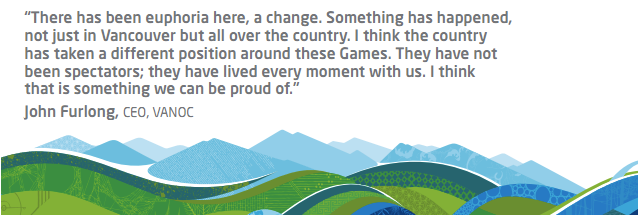Elizabeth Cheong's Blog
Musings of a university student – undecided everything.
Even the Olympic medals are shufflin’

To me, the apex of the sports marketing ladder is the Olympic Games. No matter how much money you earn working in the NHL, MBA, or NFL, you will never experience the same kind of excitement, energy, and enthusiasm working for the International Olympic Committee‘s Marketing Commission.

Running a successful Olympic Games is akin to driving through Disneyland on the 4th of July blindfolded and still managing to grab autographs from each and every Disney character – in a roller coaster cart. It’s nearly impossible! A million different issues may arise, and do arise, throughout the two week period which everyone behind-the-scenes has been working tirelessly towards for 4 years.
One thing that generally does happen year after year, and to no correlation to the marketing team (yet still highly influential to the overall aura of the Games in question), is ‘medal stripping’. Before each Olympic Games, countries are supposed to conduct their own tests of athletes, and later on, samples are given to the WADA who will review the samples and unveil results to the IOC.
Since the 70s, the appearance of doping and subsequent medal stripping has had a strong presence after every Olympic Games. Particularly in the Sydney Summer Games of 2000, two prominent athletes were stripped of their medals. Romanian Andreea Răducan was the first gymnast to be stripped of her medal for taking an over-the-counter medication for a fever (the substance is no longer on the WADA Prohibited List, it is now in the Monitoring List), and American Marion Jones was stripped of her individual and team medals won in five different events.
As the saying goes, “not all press is good press”. When these events occur, the legacy and reputation of the Games are tarnished, and often even dwarfs over the success and hard work ethic of other inspirational athletes. While this doesn’t seem to directly affect the marketing team behind the specific Games, protecting the Olympic brand is a mission that the team needs to constantly be focused on, and in this case, preventing future occurrences of the same nature and working closely with media outlets and PR firms is key to sustaining the brand that everyone in the world recognizes.
Vancouver 2010 Marketing Report
- October 16th, 2011
- Uncategorized
- No comments
- #